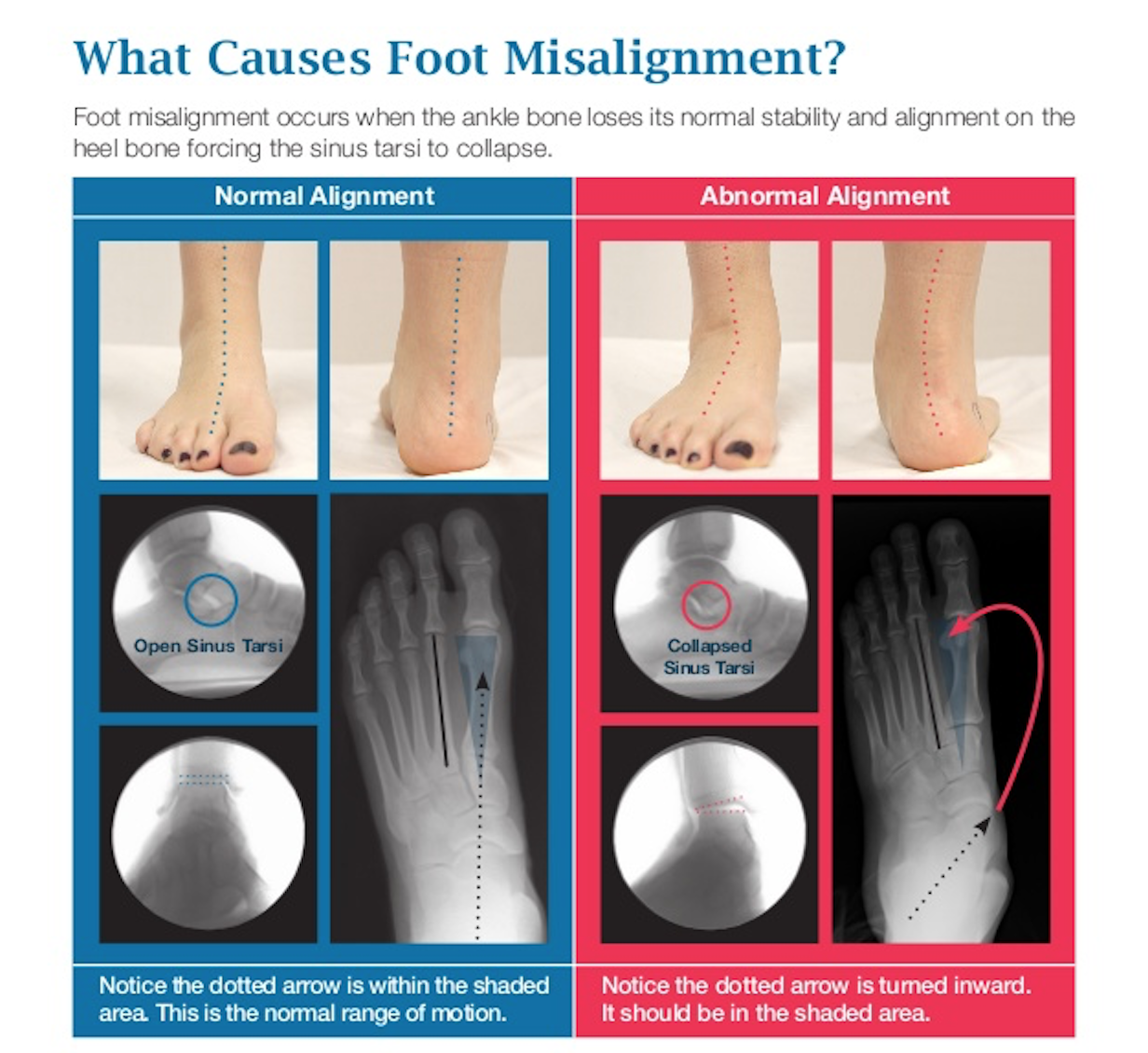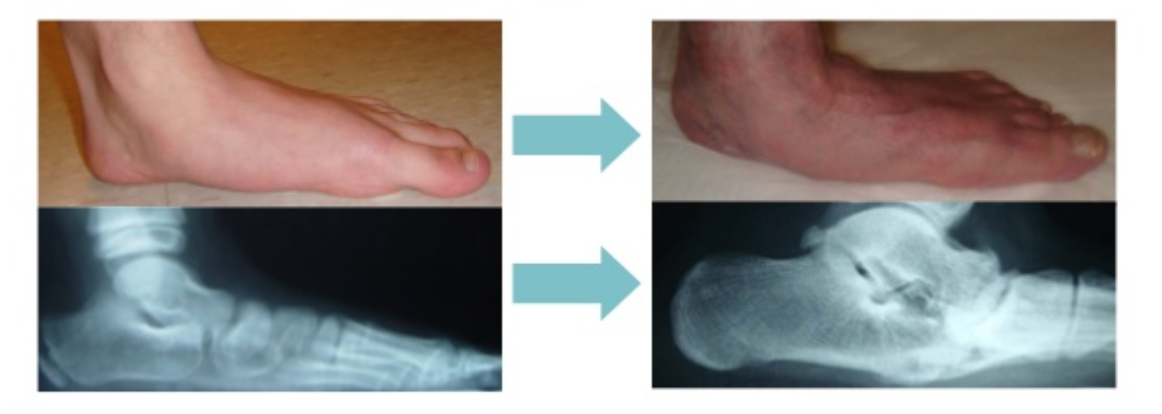Sources claim that 45% of our world’s population have misaligned feet. Though this exact figure is up for debate, there’s no doubt that this is a very real problem for many.
What exactly are misaligned feet? How can you tell if you have them? We’re here to share everything you need to know about this condition.

What are Misaligned Feet?
Perhaps the best way to access what misaligned feet are is to look at what they are not.
When standing straight and facing forward, your ankle bone should rest over the front edge of your heel bone— creating a space called the sinus tarsi. Misalignment occurs when the ankle bone loses its stability and slips out of place, usually over the heel bone, collapsing or compressing the space of the sinus tarsi.
When this gap collapses or is compressed, your ankle and heel bone crash together— and this misalignment affects the balance of the rest of your body. It can cause other conditions to manifest throughout your feet and upward throughout your knees, hips, and back.
What Do Misaligned Feet Look Like?
Oftentimes, you’ll be able to see some sort of exterior mishapeness, like bowing of your ankle even when standing straight. Even if you can’t spot the inward slump, a keen-eyed podiatrist likely will. Other times, an x-ray is needed to see the trouble that’s forming beneath the surface.
What Really Causes Misaligned Feet?
Most of the time foot misalignment is the cause of genetics or overuse.
If you have arthritis, for example, this can lead to alignment issues. Or, if you damaged your ankle or foot and it didn’t heal properly, a sprain or fracture could affect your gait. Even athletes without proper technique can cause chronic injuries that lead to misalignment issues within the foot and ankle— and consequently, throughout the entire body.

Symptoms of Misaligned Feet
Depending on your level of activity and genetics, misaligned feet can lead to a number of conditions. Oftentimes, those with misaligned feet have a tendency to roll their foot inward as they walk, a condition called pronation. Over time, this imbalance can also cause calluses, heel pain, nerve damage, bunions, hammertoes, “flat feet” and more— though, these conditions could also be the result of genetic problems or poor foot care. That’s what makes it so hard to diagnose!
Another critical problem with diagnosing misaligned feet is that the pain doesn’t always manifest itself below the ankles. Rather, our body tries to compensate for the lack of balance by putting extra strain on the knees, hips, and back— where the pain hits. Oftentimes, those with misaligned feet suffer the most after activity and chalk the aches up to their workout. Those with chronic pain in other areas often don’t think the problem is actually their feet and go untreated, or get treated for the wrong issue.
How to Treat Misaligned Feet
A podiatrist should be able to tell if you have misaligned feet with a quick MRI. Unfortunately, this isn’t a condition that can heal itself or get better with time— in fact, it’ll only get worse.
Those who suffer from pain can use a temporary Band-Aid: Orthotics. These custom-fitted shoe inserts can help to stabilize your ankle bone, but at the end of the day, your sinus tarsi remain collapsed.
For many, corrective surgery is the only option, where a stent is inserted to stabilize the ankle bone and grant you a normal range of motion. Most procedures are noninvasive and you’ll only need to rest for a few days before you’re back on your feet— literally.
Don’t Panic: It Might Not be Misaligned Feet
Before you jump to conclusions and fret over the idea of surgery, don’t panic. It might not be misaligned feet! Sometimes the problem is as simple as ill-fitting shoes, which can cause a feeling of imbalance throughout the body and manifest into the very symptoms we discussed here, like hammertoes and more.
The only way you’ll know for sure is to come for a diagnosis from a foot care professional. We’ll help find the issue and get on a fast road to recovery.
Give us a call at 239.936.5400 to make an appointment, today.
Categorized in: Blog